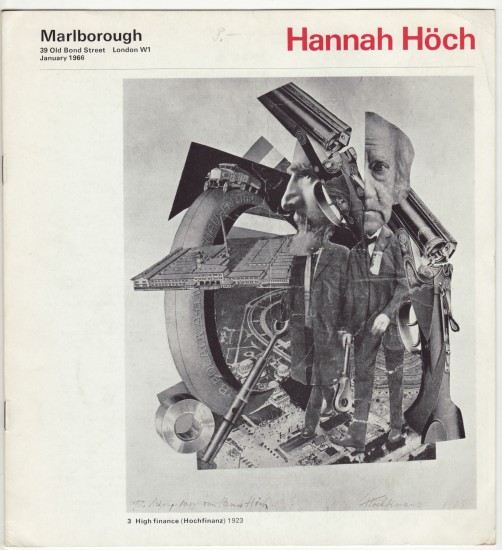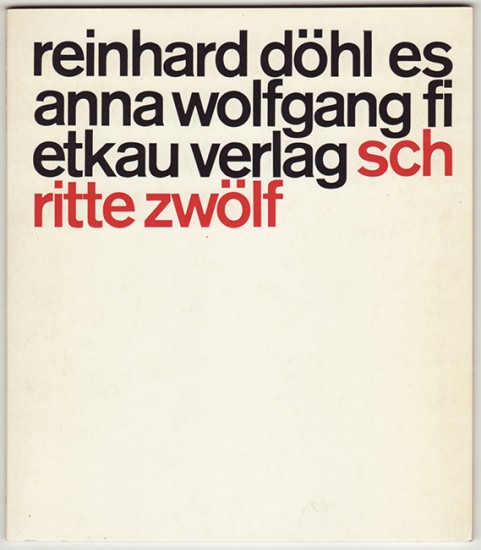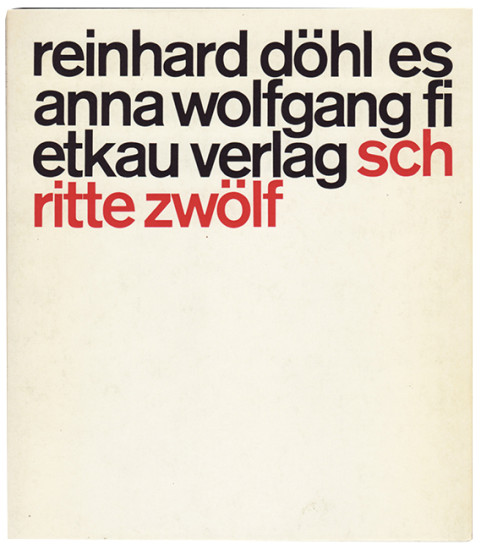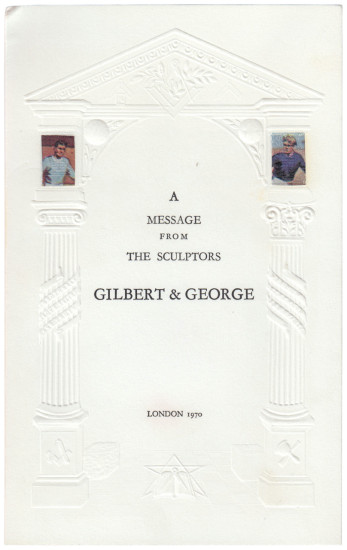Elementa Religionis Polyglotta Una cum Hymnis qui ex S[ancto] Scriptura derumpti in Ecclesia Cantantur
Anon. (Henry Aldrich?)
(Oxford?). 1666
A beautiful, complex and elaborately sophisticated document: an extraordinary and mysterious seventeenth century manuscript collection of illustrated polyglot prayers - testament perhaps to the legacy of the London Polyglot - in an exquisite contemporary English binding of red morocco.
This extraordinary volume comprises Christian prayers and texts (the Confession of Faith, Ten Commandments, the Eucharist, Benedictus, Magnificat and Nunc Dimitis and others) in a variety of Middle-East and others) in a variety of Middle-Eastern and European languages including Greek, Latin, Hebrew, Arabic, Chaldean, Syriac, Farsi, Ge'ez, French, Italian, Spanish and German. The volume is composed in the Arabic and Hebrew manner, i.e. reading from right to left, and is illustrated with a series of striking contemporary compositions including the architectural title, portraits of Jesus as the Salvator Mundi, the Virgin Mary, the Apostles and others such as Moses and Simeon.
Composed shortly after the Restoration, the title is dated 1666, and in the same year as the Great Fire, the source for the texts is likely the London or Walton's Polyglot published a short time earlier in the 1650s. Each of the prayers is polyglot, with the order of language and their presence (Ge'ez for example appears only in the latter part of the volume from the 'Institutio Baptismi' onward) varying throughout the volume. The title, now bound at the western and orthodox beginning of the book, appears at some point to have become detached and has been inserted in the wrong part of the manuscript; it seems much more likely that it should appear before the opening 'Formula Orandi' with the portrait of Jesus as Salvator Mundi facing the opening lines of the formula. Thereafter, the manuscript follows the Arabic / Hebrew, right to left, format, a format evidently suited to the inclusion of languages that read both right to left and left to right.
The manuscript poses a large number of interesting questions in terms of its origin, its production, its authorship (the manuscripts may demonstrate a number of hands), its artistic composition, its usage (devotional or pedagogical or both), its relation to music and its binding. Although the binding is unquestionably an English production, English as a language is conspicuous in its absence throughout. The dating of the manuscript, it is dated 'Anno 1666' on the title, seems certain, but the concurrence of the year of creation with that of the Great Fire prompts further questions, not least in terms of the binding.
The prayers and texts included are the following and in the following order: 'Formula Orandi' (the Lord's Prayer or 'Oratio Dominica') in Greek, Latin, Italian, Spanish, French, German, Hebrew, Syriac, Arabic and Farsi; 'Fidei Confessio' (the Nicene Creed); 'Decalogus' (the Ten Commandments); 'Institutio Baptismi' (the Baptismal Rite); 'Institutio Eucharistiae' (the Eucharist); 'Canticum Zachariae' (the Song or Canticle of Zechariah or Zachary, i.e. the Benedictus); 'Canticum Beatae Virginis [Theotokos in Greek]' (the Canticle or Song of Mary, i.e. the Magnificat); 'Canticum Simeonis' (the Song or Canticle of Simeon, i.e. the Nunc Dimitis).
The extensive illustration, executed throughout in pencil, light and dark sepia inks and a sombre grey wash, each subject given a single page, is evidently highly accomplished. The series of illustrations opens with an elaborate pictorial title in architectural form surrounding the title on a central cartouche beneath the tetragrammaton within a triangle and peopled at left and right with those depicted in the body of the manuscript itself: the Apostles above and below (at left) the figure of Moses with the legend above 'Per Mosem' and beneath 'venit lex' and above and below (at right) the figure of Jesus as the Salvator Mundi with the legend above 'Per Christum' and beneath 'fides et salus'; beneath the title cartouche in four compartments are the Evangelists with their associated lion, bull, eagle and angel (i.e. the Tetramorph).
The verso of the title, originally intended to face the opening lines of the Lord's Prayer (the 'Formula Orandi' of the manuscript) as frontispiece, is an accomplished drawing or painting in pencil, ink and wash of Jesus as the Salvator Mundi. The apostles, each with their symbolic accoutrement of keys, club, spear, pilgrim's staff and cap and so on, are depicted in the following leaves, throughout the Lord's Prayer and Nicene Creed sections, beginning with St. Peter and concluding with St. Matthew. Moses with rod and tablets is set as the frontispiece before the Ten Commandments (Decalogus), a baptismal scene precedes the Baptismal Rite (Institutio Baptismi) while the Eucharist (Institutio Eucharistiae) is preceded, indicating that an illustration has not been completed for some reason, by a blank. The Benedictus (Canticum Zachariae) has, as frontispiece, an elaborate architectural composition comparable to that for the title. This architectural scene in pencil, ink and wash, shows the open court of a church, the church with a chequered black and white floor beneath columns, balustrades and arcades, a detailed and elaborate cupola with extensive decorative windows and features surmounts the whole while the figure of a monk at prayer is visible at the rear of the chequered floor beneath a large and beautifully detailed window. The two final illustrations are both portraits, and stand as frontispieces for the remaining canticles, the Magnificat (Canticum Beatae Virginis [Theotokos]) with the portrait of Mary, and the Nunc Dimitis (Canticum Simeonis) with the portrait of Simeon.
The binding, a beautiful example of English design and execution, is attributable to Queens' Binder A (c.1670s - 1680s), often thought to be William Nott. Comparable examples to the present binding may be found in Nixon's 'Five Centuries of Bookbinding' (see no. 40 but particularly no. 44), Foot's 'The Henry Davis Gift' (see no. 119 but particularly 120) and Maggs' catalogue 966 'Bookbinding in Great Britain' (see no. 43). The present manuscript is earlier than many of the books attributed to Queens' Binder A which date usually to the mid-1670s (that said Nixon's argument demonstrating that Nott is the Queens' Binder A relates to a book bound for Samuel Pepys c.1669) although this binding does feature the pink, white and blue headbands and other elements associated with Nott. It is suggested usually that Nott's shop in St. Paul's Churchyard was destroyed in the Great Fire of September 1666 but there is the possibility that this manuscript was completed earlier in 1666 and was bound in Nott's first shop.
The manuscript 'MS 5242' in the British Library presents a number of similar features to the present manuscript: the title although unfinished in the BL manuscript conforms to a very similar scheme and incorporates similar iconography and text, the polyglot texts are in the same languages in both, both too feature the same passage with the same attribution from Athanasius Kircher (a Coptic prayer), the texts of both are likely in the same hand(s) and follow the same format, many of the illustrations - scenes featuring multiple figures, more complex colour and a greater degree of finishing occur in the BL version as opposed to the single full-page portraits and lack of colour of the present version - feature matching iconography and appear to be by the same artist. That the two manuscripts are interrelated seems clear and it seems likely too that they share an origin.
The BL manuscript features the inscription 'Bibliotheca Sloaniana' (i.e. Sir Hans Sloane, 1660 - 1673, whose collection was incorporated into the British Museum in 1753) to an initial blank and an earlier provenance and possible origin is given as Henry Aldrich (1647 - 1710). Aldrich, the Dean of Christ Church, academic, architect, friend of Hawksmoor, mathematician, draughtsman and bibliophile who was reputed to own the finest collection of architecture books in private hands in England, is a plausible candidate as originator. A connection to Aldrich leads necessarily to Oxford and while we can locate no detail regarding Aldrich's study of any of the more esoteric languages of the polyglot, Oxford was certainly a centre for their study. The Archbishop of Canterbury, Thomas Laud, had endowed his Laudian Professor of Arabic in 1636 and the first encumbent, Edward Pococke (appointed Regius Professor of Hebrew in 1648 he held both posts until his death), would have known Aldrich and others likely associated with the polyglot.
The BL manuscript has been rebound but the possibility that it and the present manuscript share a common origin in Aldrich and were separated prior to the latter's purchase by Sloane is intriguing. At his death Aldrich left his books (some 3,000) his musical manuscripts (reputed to be some 8,000 compositions) and his prints (some 2,000 engravings) to Christ Church.
[see BL Sloane MS 5242; see Howard M. Nixon's 'Five Centuries of Bookbinding' & 'English Restoration Bookbindings'; see 'Miriam Foot's 'The Henry Davis Gift' vol. II; see Maggs' 'Bookbinding in Great Britain' (i.e. Catalogue 966); see Brian Walton's 'Biblia Sacra Polyglotta'].
This extraordinary volume comprises Christian prayers and texts (the Confession of Faith, Ten Commandments, the Eucharist, Benedictus, Magnificat and Nunc Dimitis and others) in a variety of Middle-East and others) in a variety of Middle-Eastern and European languages including Greek, Latin, Hebrew, Arabic, Chaldean, Syriac, Farsi, Ge'ez, French, Italian, Spanish and German. The volume is composed in the Arabic and Hebrew manner, i.e. reading from right to left, and is illustrated with a series of striking contemporary compositions including the architectural title, portraits of Jesus as the Salvator Mundi, the Virgin Mary, the Apostles and others such as Moses and Simeon.
Composed shortly after the Restoration, the title is dated 1666, and in the same year as the Great Fire, the source for the texts is likely the London or Walton's Polyglot published a short time earlier in the 1650s. Each of the prayers is polyglot, with the order of language and their presence (Ge'ez for example appears only in the latter part of the volume from the 'Institutio Baptismi' onward) varying throughout the volume. The title, now bound at the western and orthodox beginning of the book, appears at some point to have become detached and has been inserted in the wrong part of the manuscript; it seems much more likely that it should appear before the opening 'Formula Orandi' with the portrait of Jesus as Salvator Mundi facing the opening lines of the formula. Thereafter, the manuscript follows the Arabic / Hebrew, right to left, format, a format evidently suited to the inclusion of languages that read both right to left and left to right.
The manuscript poses a large number of interesting questions in terms of its origin, its production, its authorship (the manuscripts may demonstrate a number of hands), its artistic composition, its usage (devotional or pedagogical or both), its relation to music and its binding. Although the binding is unquestionably an English production, English as a language is conspicuous in its absence throughout. The dating of the manuscript, it is dated 'Anno 1666' on the title, seems certain, but the concurrence of the year of creation with that of the Great Fire prompts further questions, not least in terms of the binding.
The prayers and texts included are the following and in the following order: 'Formula Orandi' (the Lord's Prayer or 'Oratio Dominica') in Greek, Latin, Italian, Spanish, French, German, Hebrew, Syriac, Arabic and Farsi; 'Fidei Confessio' (the Nicene Creed); 'Decalogus' (the Ten Commandments); 'Institutio Baptismi' (the Baptismal Rite); 'Institutio Eucharistiae' (the Eucharist); 'Canticum Zachariae' (the Song or Canticle of Zechariah or Zachary, i.e. the Benedictus); 'Canticum Beatae Virginis [Theotokos in Greek]' (the Canticle or Song of Mary, i.e. the Magnificat); 'Canticum Simeonis' (the Song or Canticle of Simeon, i.e. the Nunc Dimitis).
The extensive illustration, executed throughout in pencil, light and dark sepia inks and a sombre grey wash, each subject given a single page, is evidently highly accomplished. The series of illustrations opens with an elaborate pictorial title in architectural form surrounding the title on a central cartouche beneath the tetragrammaton within a triangle and peopled at left and right with those depicted in the body of the manuscript itself: the Apostles above and below (at left) the figure of Moses with the legend above 'Per Mosem' and beneath 'venit lex' and above and below (at right) the figure of Jesus as the Salvator Mundi with the legend above 'Per Christum' and beneath 'fides et salus'; beneath the title cartouche in four compartments are the Evangelists with their associated lion, bull, eagle and angel (i.e. the Tetramorph).
The verso of the title, originally intended to face the opening lines of the Lord's Prayer (the 'Formula Orandi' of the manuscript) as frontispiece, is an accomplished drawing or painting in pencil, ink and wash of Jesus as the Salvator Mundi. The apostles, each with their symbolic accoutrement of keys, club, spear, pilgrim's staff and cap and so on, are depicted in the following leaves, throughout the Lord's Prayer and Nicene Creed sections, beginning with St. Peter and concluding with St. Matthew. Moses with rod and tablets is set as the frontispiece before the Ten Commandments (Decalogus), a baptismal scene precedes the Baptismal Rite (Institutio Baptismi) while the Eucharist (Institutio Eucharistiae) is preceded, indicating that an illustration has not been completed for some reason, by a blank. The Benedictus (Canticum Zachariae) has, as frontispiece, an elaborate architectural composition comparable to that for the title. This architectural scene in pencil, ink and wash, shows the open court of a church, the church with a chequered black and white floor beneath columns, balustrades and arcades, a detailed and elaborate cupola with extensive decorative windows and features surmounts the whole while the figure of a monk at prayer is visible at the rear of the chequered floor beneath a large and beautifully detailed window. The two final illustrations are both portraits, and stand as frontispieces for the remaining canticles, the Magnificat (Canticum Beatae Virginis [Theotokos]) with the portrait of Mary, and the Nunc Dimitis (Canticum Simeonis) with the portrait of Simeon.
The binding, a beautiful example of English design and execution, is attributable to Queens' Binder A (c.1670s - 1680s), often thought to be William Nott. Comparable examples to the present binding may be found in Nixon's 'Five Centuries of Bookbinding' (see no. 40 but particularly no. 44), Foot's 'The Henry Davis Gift' (see no. 119 but particularly 120) and Maggs' catalogue 966 'Bookbinding in Great Britain' (see no. 43). The present manuscript is earlier than many of the books attributed to Queens' Binder A which date usually to the mid-1670s (that said Nixon's argument demonstrating that Nott is the Queens' Binder A relates to a book bound for Samuel Pepys c.1669) although this binding does feature the pink, white and blue headbands and other elements associated with Nott. It is suggested usually that Nott's shop in St. Paul's Churchyard was destroyed in the Great Fire of September 1666 but there is the possibility that this manuscript was completed earlier in 1666 and was bound in Nott's first shop.
The manuscript 'MS 5242' in the British Library presents a number of similar features to the present manuscript: the title although unfinished in the BL manuscript conforms to a very similar scheme and incorporates similar iconography and text, the polyglot texts are in the same languages in both, both too feature the same passage with the same attribution from Athanasius Kircher (a Coptic prayer), the texts of both are likely in the same hand(s) and follow the same format, many of the illustrations - scenes featuring multiple figures, more complex colour and a greater degree of finishing occur in the BL version as opposed to the single full-page portraits and lack of colour of the present version - feature matching iconography and appear to be by the same artist. That the two manuscripts are interrelated seems clear and it seems likely too that they share an origin.
The BL manuscript features the inscription 'Bibliotheca Sloaniana' (i.e. Sir Hans Sloane, 1660 - 1673, whose collection was incorporated into the British Museum in 1753) to an initial blank and an earlier provenance and possible origin is given as Henry Aldrich (1647 - 1710). Aldrich, the Dean of Christ Church, academic, architect, friend of Hawksmoor, mathematician, draughtsman and bibliophile who was reputed to own the finest collection of architecture books in private hands in England, is a plausible candidate as originator. A connection to Aldrich leads necessarily to Oxford and while we can locate no detail regarding Aldrich's study of any of the more esoteric languages of the polyglot, Oxford was certainly a centre for their study. The Archbishop of Canterbury, Thomas Laud, had endowed his Laudian Professor of Arabic in 1636 and the first encumbent, Edward Pococke (appointed Regius Professor of Hebrew in 1648 he held both posts until his death), would have known Aldrich and others likely associated with the polyglot.
The BL manuscript has been rebound but the possibility that it and the present manuscript share a common origin in Aldrich and were separated prior to the latter's purchase by Sloane is intriguing. At his death Aldrich left his books (some 3,000) his musical manuscripts (reputed to be some 8,000 compositions) and his prints (some 2,000 engravings) to Christ Church.
[see BL Sloane MS 5242; see Howard M. Nixon's 'Five Centuries of Bookbinding' & 'English Restoration Bookbindings'; see 'Miriam Foot's 'The Henry Davis Gift' vol. II; see Maggs' 'Bookbinding in Great Britain' (i.e. Catalogue 966); see Brian Walton's 'Biblia Sacra Polyglotta'].
[68 leaves including blanks]. Large 8vo. (220 x 148 mm). Elaborate architectural pictorial title in pencil, sepia ink and wash peopled with the apostles, saints and other figures, title in sepia ink within central cartouche, dated above and with central triangle enclosing the tetragrammaton, the whole ruled in red, verso with elaborate pencil drawing of Jesus as 'Salvator Mundi' with orb and halo (the title misbound - see below) and all following leaves with manuscript text in sepia ink in a variety of languages recto and verso and with 17 further dra Full contemporary crushed morocco by the Queens' Binder A (William Nott?), boards with double roll tool border within double fillet to surround a beautiful geometric interlacing décor with additional decorative floral, guilloche and volute tools, banded spine with gilt cruciform composition in six compartments, board edges and turn-ins with roll tool décor, comb marbled endpapers, a.e.g.
#48234
























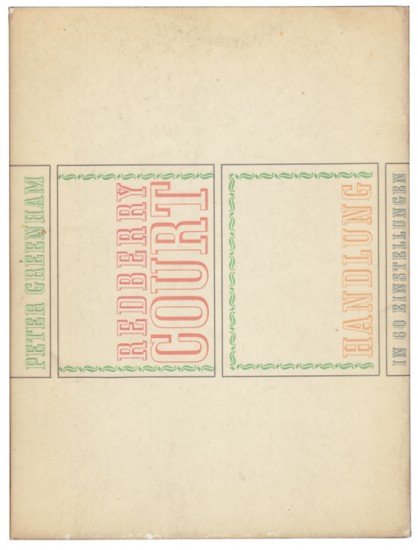
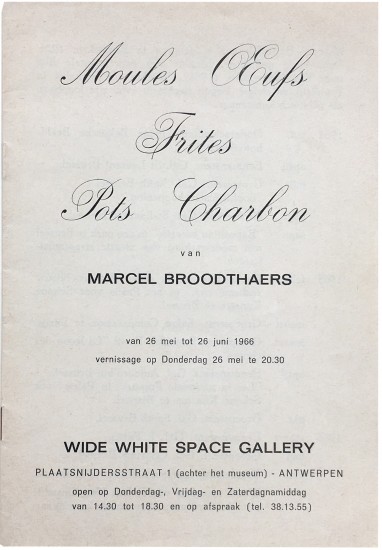

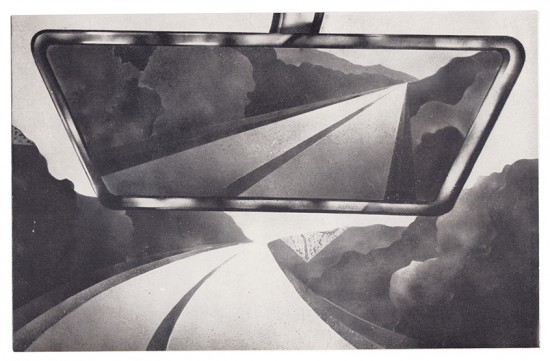
![Untitled. [Four postcards]](https://media.books.simsreed.com/img/stockimages/sized/47138.jpg)
